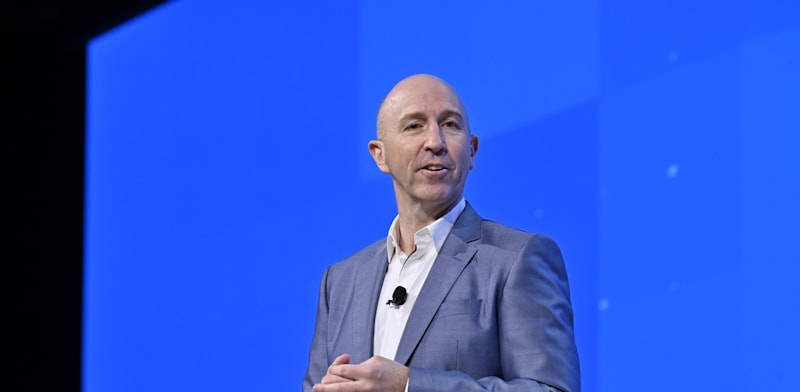Monday, March 25, 2024 | 2 a.m.
One week ago, President Joe Biden signed an executive order that will create a $12 billion fund to improve our understanding of — and ideally treatments for — women’s health. It’s a welcome, if egregiously belated investment by the U.S. government. And although it sounds like a big amount, there’s a lot of catching up to do.
For example, one analysis found that conditions that overwhelmingly affect women, like migraines, headaches, endometriosis, anxiety disorders and chronic fatigue syndrome, are severely underfunded compared with conditions that predominantly affect men. (Anyone following the long COVID story knows that condition could easily be added to this list.)
Researchers call this the health gap, and it has serious societal and economic consequences: A recent report from McKinsey & Company found that reducing the time women spend in poor health by 25% could be worth $1 trillion, in large part because health disparities disproportionately hit women during their working years.
The funds allocated by this executive order, which cut across a wide swath of agencies and areas of health, begin to address the problem. The next step will be for Congress to approve Biden’s larger budget for 2025, thereby funding the order. The ultimate test will be whether foundational research in women’s health can attract more interest from industry, which has not given the area enough attention.
“My hope is that we’re at the beginning of a fundamental shift in the recognition of the importance of this necessary funding and research,” says Lisa Larkin, president of the Menopause Society. “It’s not enough yet, but I really am excited.”
It’s no secret that women have historically gotten the short end of the stick when it comes to medical research. For decades, women were left out of clinical trials entirely. That’s a situation the National Institutes of Health has made strides in remedying, but disparities linger.
A recent report from the RAND Corporation, commissioned by the nonprofit WHAM (Women’s Health Access Matters), found that a relatively small investment in studying women and Alzheimer’s disease, cardiovascular disease and rheumatoid arthritis would pay economic and societal dividends, says WHAM’s president, Lori Frank. Doubling the modest portion of women-focused research dollars in those three conditions — an investment that would amount to about $300 million — could increase lifespan and productive time in the workforce, while saving society some $13 billion, the report estimated.
Of note, Biden’s women’s health initiative pays special attention to the midlife period, an area where the health gap feels most critical. “The most important time for me to evaluate a woman is between 40 and 60,” Larkin says, and yet that’s when they are most often lost in the health care system. They’re past their childbearing years and have yet to show up with symptoms of serious diseases. But that’s exactly when early signs of serious diseases start to emerge. Men, for example, start to show signs of heart disease in their 40s, but many women aren’t aware that their risk of a cardiovascular event — the No. 1 killer of women in the U.S. — rises sharply in their 50s.
Midlife is also a time where the lack of clear information about menopause means so many women fall prey to unproven and often expensive solutions. The lack of good, evidence-backed information and supportive care from the medical community has pushed many women to look for answers on their own.
Companies are more than happy to fill the void. But that means that instead of evidence-backed care, we get at-home menopause tests that most experts think aren’t actually helpful. Rather than clear guidelines and support about hormone replacement therapy, we get sketchy supplements from Drew Barrymore. Instead of sound advice on sexual health, we get Gwyneth Paltrow’s jade eggs. (To be clear, I’m all for celebrities normalizing aging. But they are not medical experts and don’t always elevate experts who offer evidence-based advice. And we ought to be very skeptical when their efforts to destigmatize also line their pockets.)
Yes, there are reasons to be hopeful about women’s health. The past year has brought several important advances, including a new treatment for postpartum depression, the first drug for hot flashes associated with menopause, and a rare biotech startup focused on a treatment for preeclampsia. There’s been a palpable sense among physicians focused on women’s health that momentum is building around conditions that have for too long gone ignored. Biden’s $12 billion is could build on that success.
But forgive me if my excitement is tempered by a deep frustration, given the long history of neglect. It’s also unclear whether this Congress will actually approve the funds and how soon they would be spent. (For comparison’s sake, the annual budget for the National Institutes of Health is $48 billion.)
When I look around at what’s happening in the rest of the biomedical universe — like the deep investments that have led to astounding new technologies like Crispr or that have changed the course of certain types of cancer — it can feel like I’m celebrating getting the crumbs of a three-tiered cake.
Lisa Jarvis is a Bloomberg Opinion columnist covering biotech, health care and the pharmaceutical industry.















